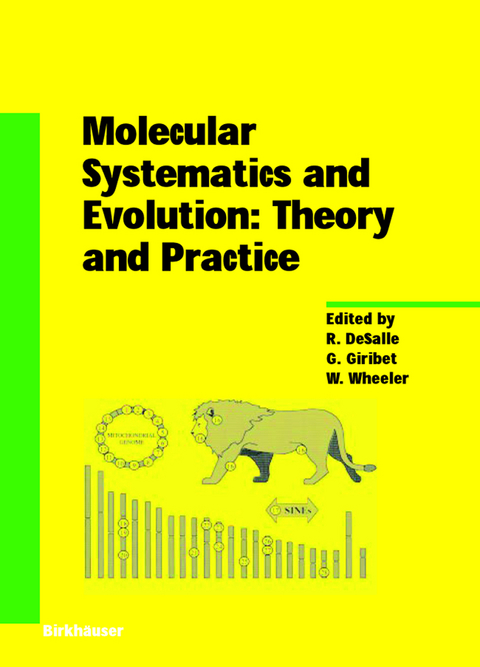
Molecular Systematics and Evolution: Theory and Practice
Springer Basel (Verlag)
978-3-7643-6544-8 (ISBN)
Important practical implications are established by case reports and specific examples. The present book is the ideal complement to the practitioner's manual Techniques in Molecular Systematics and Evolution, recently published by the same editors in the Birkhäuser MTBM book series.
The first part of this book deals with important applications of evolutionary and systematic analysis at different taxonomic levels. The second part discusses DNA multiple sequence alignment, species designations using molecular data, evo-devo and other topics that are problematic or controversial. In the last part, novel topics in molecular evolution and systematics, like genomics, comparative methods in molecular evolution and the use of large data bases are described. The final chapter deals with problems in bacterial evolution, considering the increasing access to large numbers of complete genome sequences.
1. Evolutionary analysis at different levels.- to part 1.- Cladistics, populations and species in geographical space: the case of Heliconius butterflies.- Species to genera: phylogenetic inference in the Hawaiian Drosophilidae.- Higher-level systematic analysis of birds: current problems and possible solutions.- Relative quality of different systematic datasets for cetartiodactyl mammals: assessments within a combined analysis framework.- Phylogeny of the holometabolous insect orders based on 18S ribosomal DNA: when bad things happen to good data.- Relationships among metazoan phyla as inferred from 18S rRNA sequence data: a methodological approach.- 2. Current problems in molecular systematics.- to part 2.- DNA multiple sequence alignments.- Theory and practice of parallel direct optimization.- Some statistical aspects of the maximum parsimony method.- 'Pluralism' and the aims of phylogenetic research.- Molecular systematics and the origin of species: new syntheses or methodological introgressions?.- Is morphology still relevant?.- Development, homology and systematics.- 3. New approaches to molecular evolution.- to part 3.- Gene family phylogenetics: tracing protein evolution on trees.- Evolution of spider silk proteins: insight from phylogenetic analyses.- Comparative methods and evolution.- The use of physiological data to corroborate cospeciation events in symbiosis.- Reexamining microbial evolution through the lens of horizontal transfer.- References.
| Erscheint lt. Verlag | 1.1.2002 |
|---|---|
| Reihe/Serie | Experientia Supplementum |
| Zusatzinfo | IX, 309 p. |
| Verlagsort | Basel |
| Sprache | englisch |
| Maße | 155 x 235 mm |
| Gewicht | 626 g |
| Themenwelt | Medizin / Pharmazie |
| Naturwissenschaften ► Biologie | |
| Schlagworte | Bacteria • Development • DNA • Evolution • genes • Genetic research • Genetics • genomics • Molecular Evolution • Morphology • phylogenetic analyses • Phylogeny • Protein • Systematics • Systematik • the origin |
| ISBN-10 | 3-7643-6544-7 / 3764365447 |
| ISBN-13 | 978-3-7643-6544-8 / 9783764365448 |
| Zustand | Neuware |
| Haben Sie eine Frage zum Produkt? |
aus dem Bereich


